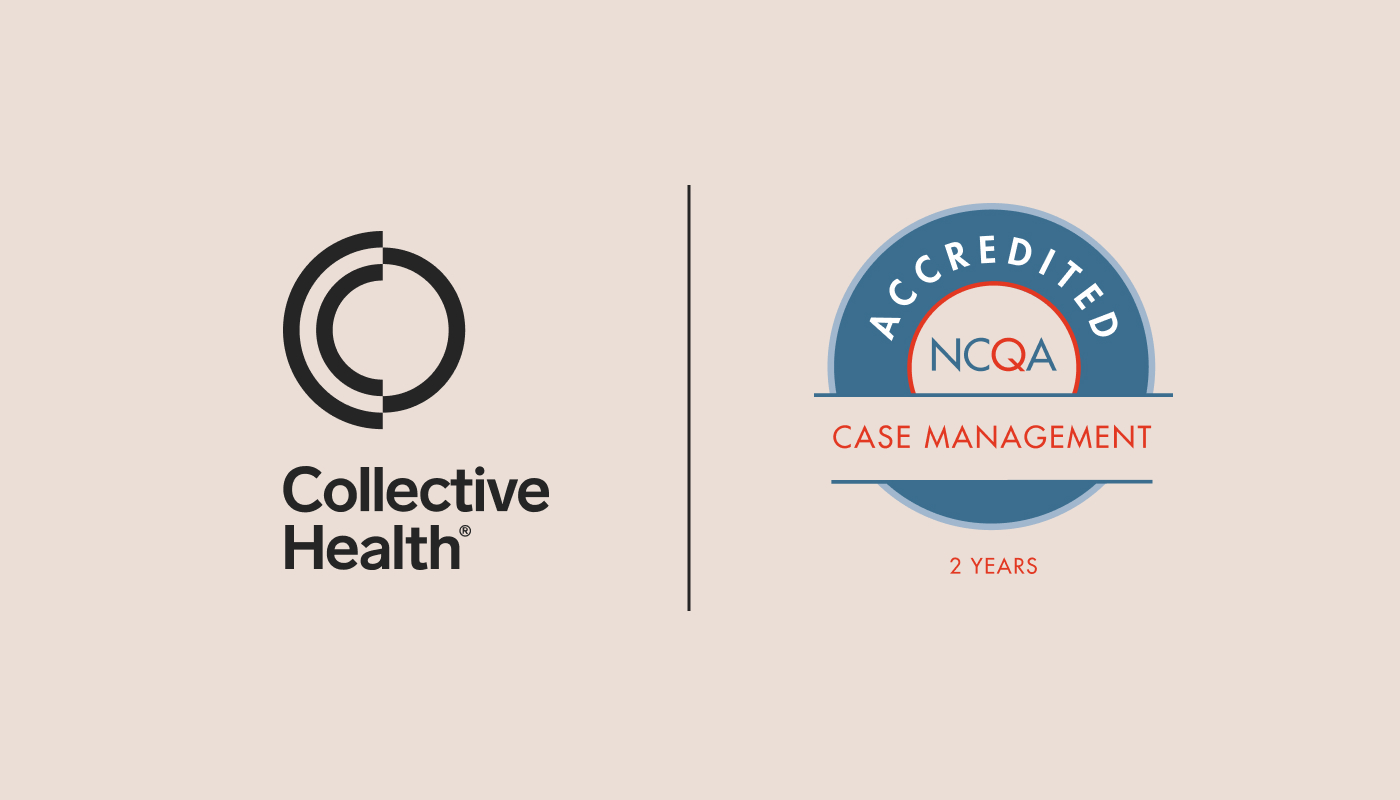Over the last decade, nearly every industry—from finance and travel to retail and entertainment— has applied the latest design and technology to help simplify and personalize the customer experience. Healthcare, however, is an unfortunate exception, lagging behind in providing a personalized patient experience, and at the expense of helping people understand and navigate their care. The use of thirty year-old technology like fax machines paired with siloed health records are still staples of the American healthcare experience.
At Collective Health, we want to help make healthcare work for everyone. We’ve spent the last seven years harnessing technology and building products that bring disparate data together in order to modernize the healthcare experience for our members. And over the last year, we’ve developed functionality that provides individualized health recommendations to help make traversing our fragmented healthcare system easier.
Introducing Personalized Recommendations
Powered by CH Cortex™, Collective Health’s proprietary machine learning engine that analyzes medical claims, Collective Health can empower our nearly quarter million members to make more informed choices about their health while streamlining access to their benefits.
Launched in 2019, our Personalized Recommendations are designed to simplify what people need to know, provide the right information at the right time, and in the format that works best for a particular individual. This includes in-app recommendations and email notifications.
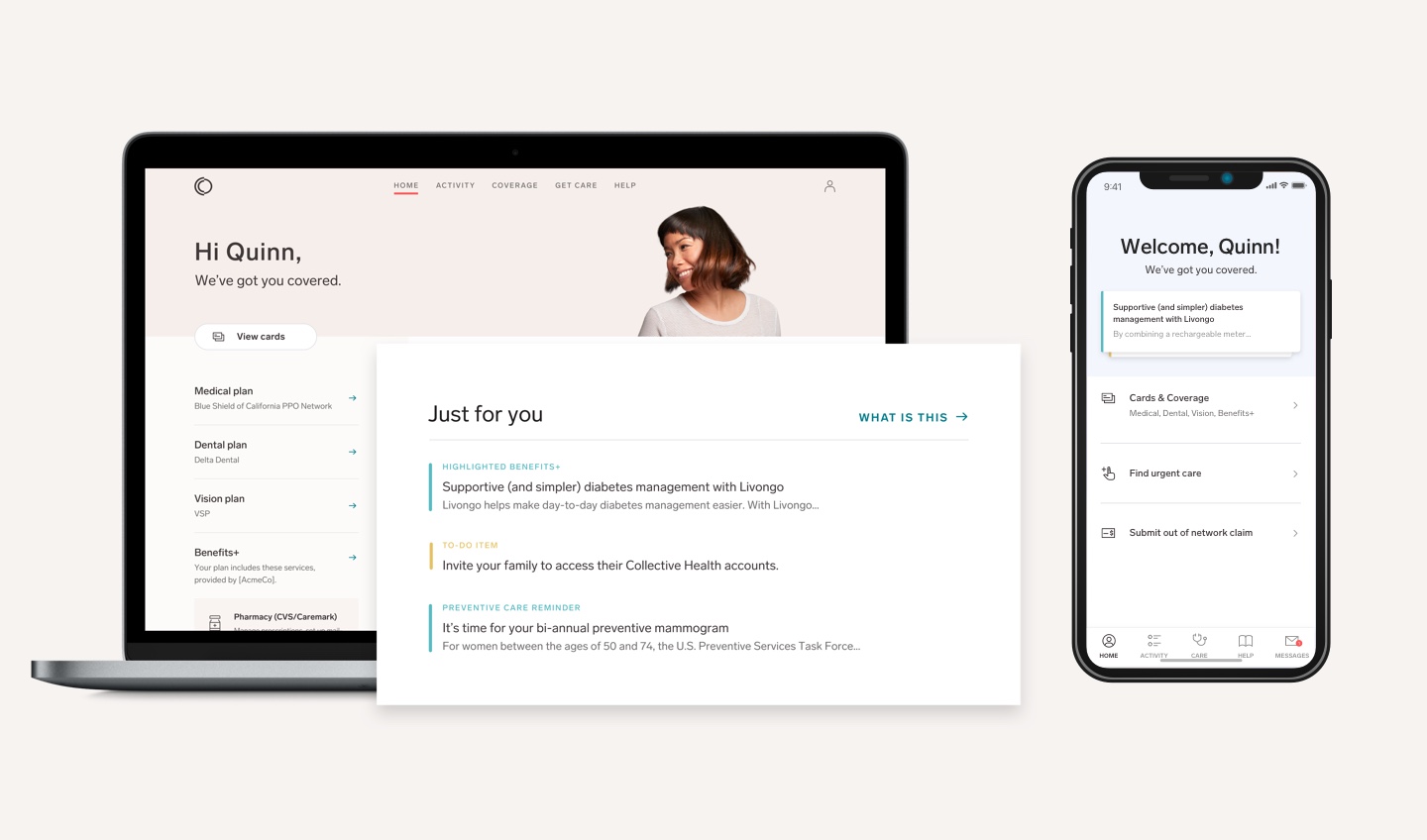
Our Approach to Personalization
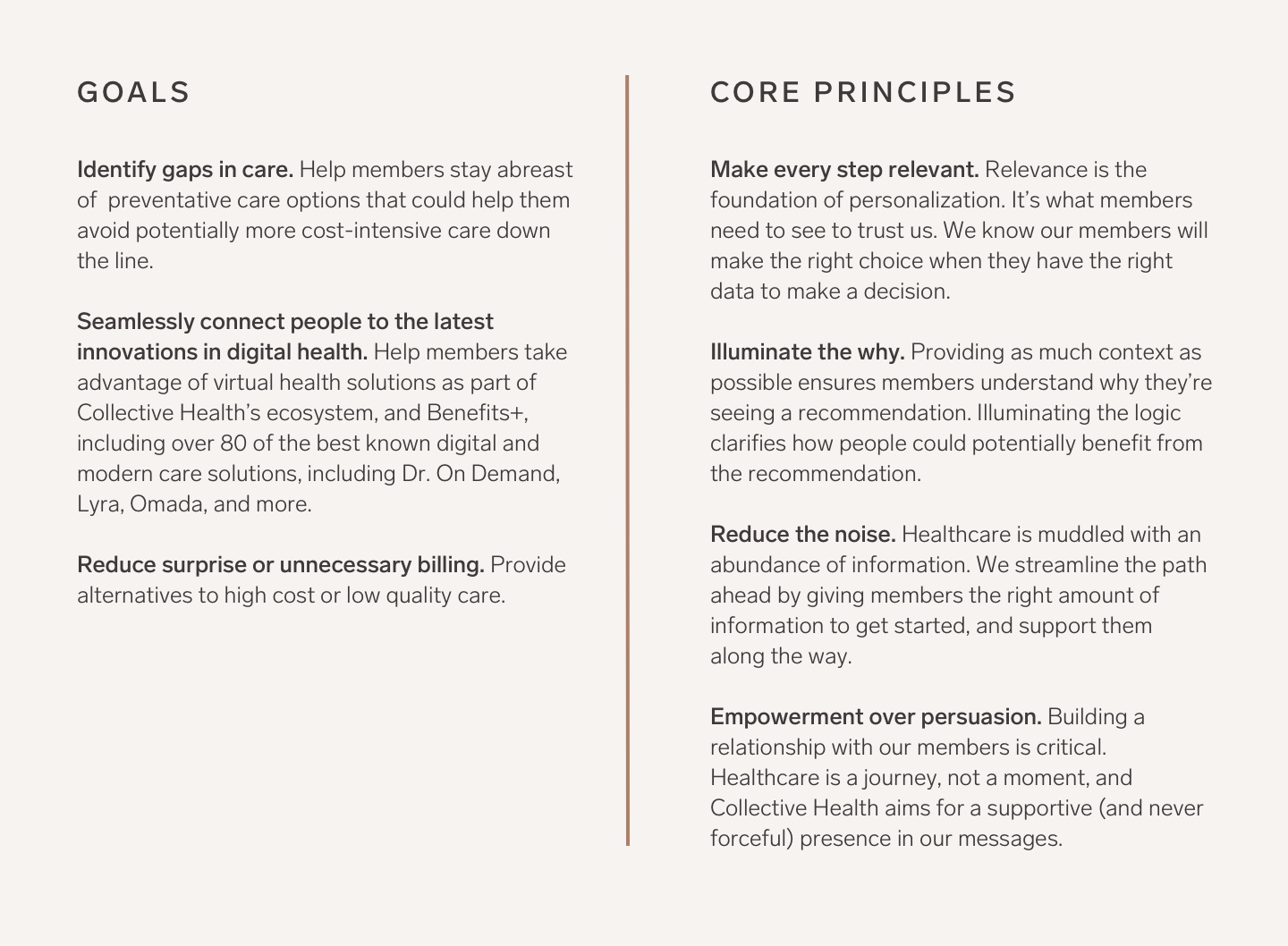
Early Programs and Results
In the first months during the initial rollout of Personalized Recommendations, we sent out tens of thousands of recommendations to members via the Collective Health app. Among those outreached, about 1 out of 5 members engaged by either following through with the recommendation or inquiring to learn more.
We’re excited with the early results that our personalized recommendation programs have delivered in helping members make better informed health decisions, and will continue to evolve our approach and the ways we measure its success. Here are a few specific areas where we’ve seen strong initial progress.
Gaps in Care: Breast cancer prevention
One of our earliest programs was to help identify members at risk of breast cancer, and to support them in ensuring they were taking the correct preventative measures to avoid potentially more intensive medical care down the line. Via CH Cortex™ we are able to spot indicators for at-risk members overdue for mammograms. Following our personalized outreach, 12% of members have followed through on the recommendation to receive a mammogram.
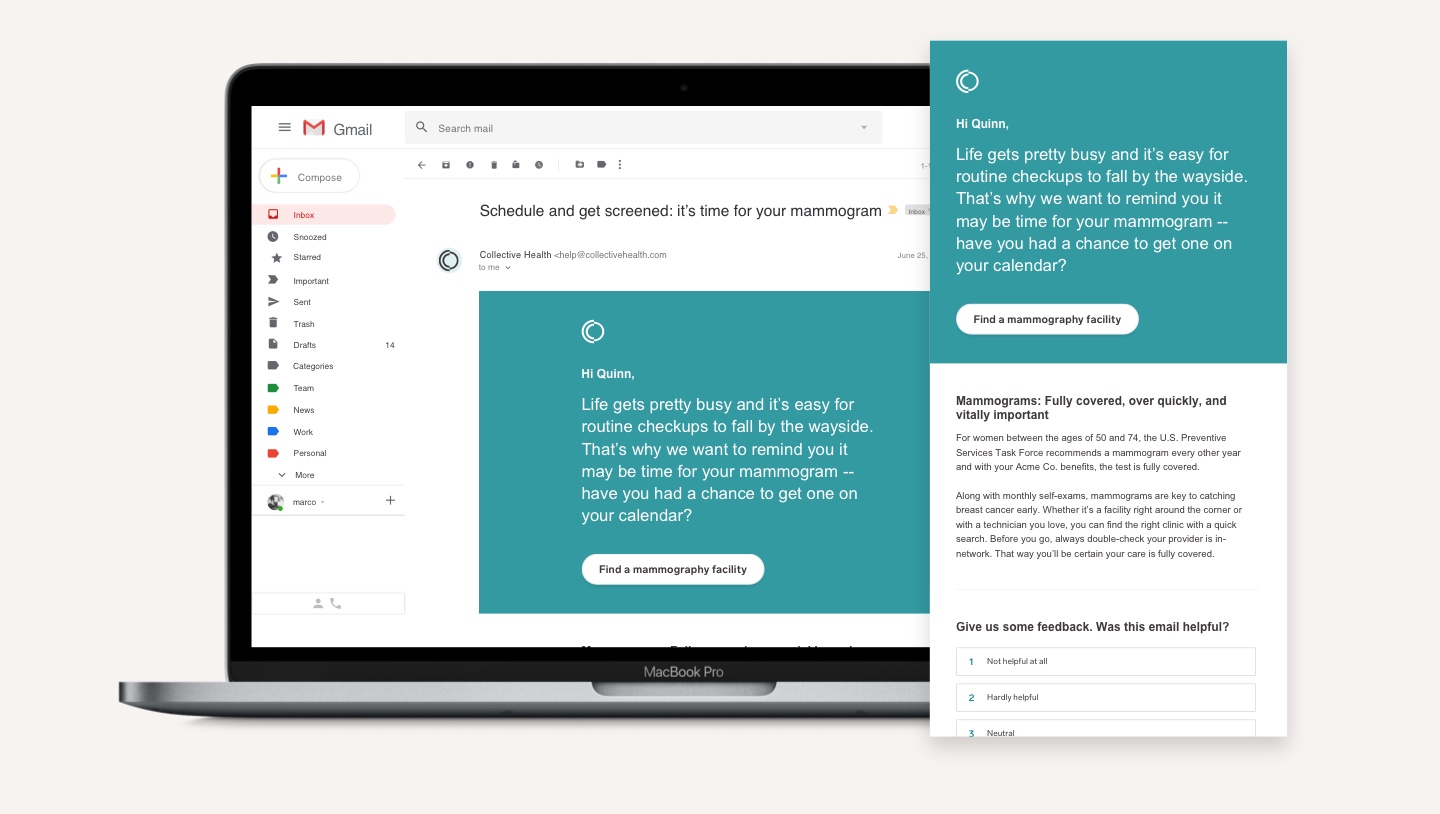
Partner Recommendations: Better access to the latest in digital health
Prior to the worldwide COVID-19 outbreak, and as part of a program to connect members to unbiased information and virtual care across our partner ecosystem, we saw a large uptick in utilization of services including:
- 211% increase in chronic disease management services
- 80% increase in second opinion services
- 70% increase in cost and quality assessment services
- 8% increase in behavioral health services
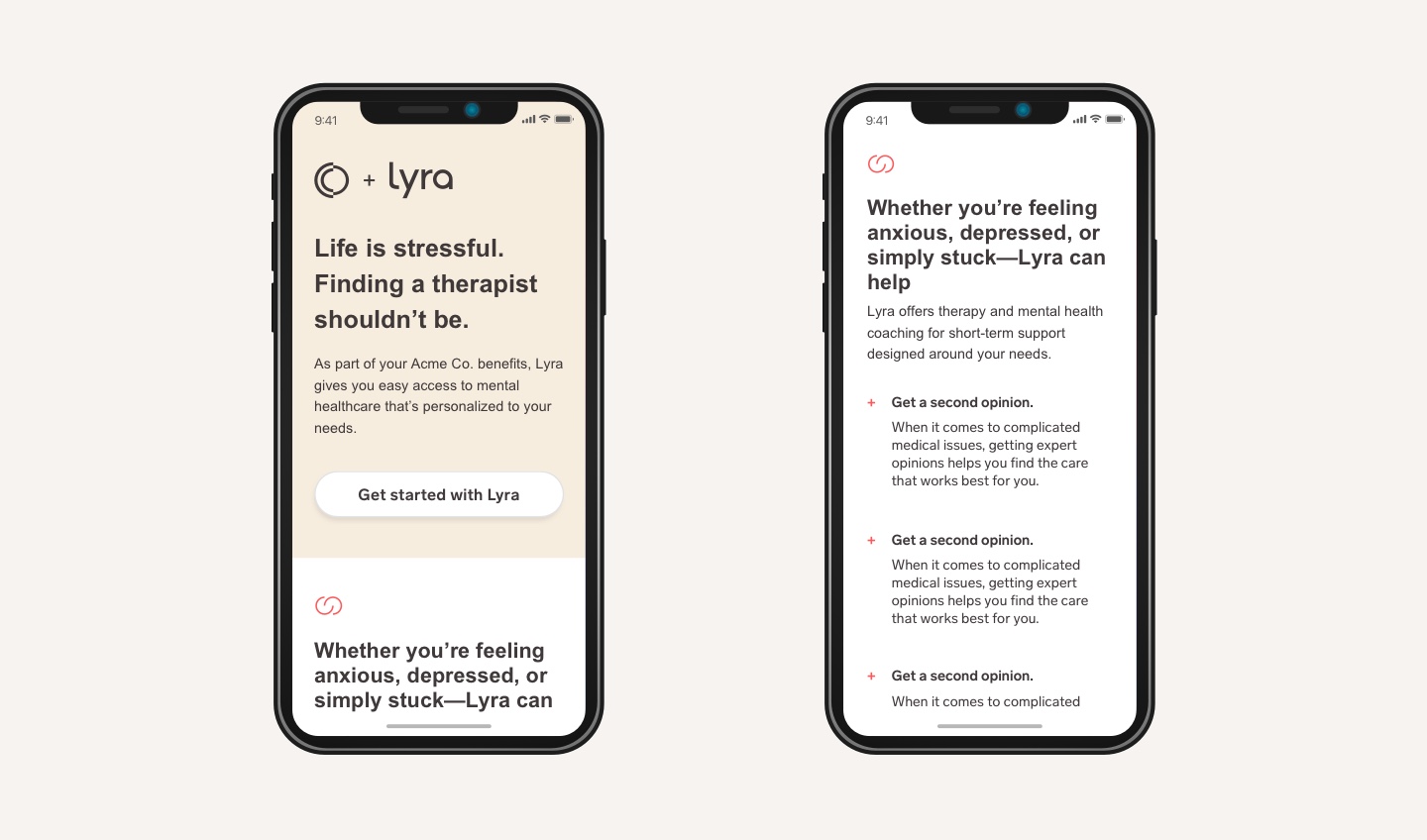
Reduce Surprise Billing: Medical imaging
While an MRI machine might be the exact same machine at three different providers, the cost to a patient can vary widely—by some estimates, from $300 to $3000 within the same geographic area. This is just one example of the variability in costs for medical services that we see across the industry. We launched a pilot program with several clients to help inform members about lower cost medical imaging services. When members are seeking medical imaging, including MRIs and CT Scans, Collective Health directs them to our cost saving tools, which provide additional information on in-network pricing. To date, 13% of members have followed through on our recommendation to switch facilities for their imaging services.
What’s Next: Helping people navigate the biggest health challenge of our lifetime
As we look ahead, we’ve expanded our focus to offer our personalized health care solutions to support people during the COVID-19 health crisis. To help our members better navigate the global pandemic and ensure they’re able to access the healthcare they need, our next set of personalized recommendations will be applied to three key areas:
Mental Health
The impacts of COVID-19 on mental health are well documented. This includes acute episodes of depression, anxiety, substance abuse, and more. In-network mental health providers have been historically difficult to find, and as practices are increasingly stretched thin, demand will only make this problem worse. In the coming months, we’re rolling out additional personalized recommendations focused on helping members find more easily accessible mental health support and care.
Reigniting Preventive Care
Right now, people are simply not getting the preventive care they would otherwise be receiving. In the first half of 2019, 45% of Collective Health’s total preventive care claims for the year had been incurred. In the first half of 2020, we’re estimating that only 34% of the total preventive claims for the year have been incurred. With lockdowns being reinforced in many areas in response to new COVID-19 outbreaks, it’s likely that we will fall further behind and many people will forgo preventative care altogether. With a new set of recommendations, we’ll alert members proactively to preventive care options—in the right setting and on a timeframe that works for them.
Chronic care management
For high risk members in need of ongoing care for chronic conditions like diabetes or those dealing with a cancer diagnosis, COVID-19 has presented unique challenges in getting the in-person care they need. We’re continuing to dedicate resources towards identifying these individuals and aiding them with our complex care management system.
In the coming months, we’ll have more to share regarding Collective Health’s personalization work and the ways in which we’re helping our members navigate a rapidly evolving healthcare system. To learn how Collective Health can help your organization, please reach out by filling out the below form.


